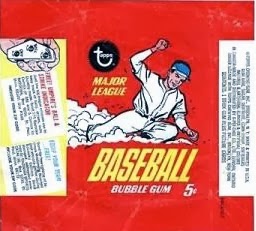1965 Topps Baseball:
1, 2, 3, 4, 5, 6, 7, 8, 9, 10, 11, 12, 14, 16, 17, 22, 25, 32, 33, 34, 38, 40, 41, 42, 43, 46, 47, 48, 49, 50, 53, 54, 55, 58, 60, 61, 62, 68, 70, 71, 73, 74, 76, 77, 78, 81, 82, 83, 88, 89, 90, 94, 95, 97, 99, 100, 103, 108, 110, 111, 113, 114, 118, 119, 120, 125, 126, 130, 132, 133, 134, 135, 137, 138, 139, 140, 142, 143, 144, 145, 150, 151, 152, 153, 155, 157, 160, 165, 166, 167, 170, 172, 173, 175, 176, 178, 180, 181, 182, 185, 188, 190, 191, 192, 193, 194, 197, 199, 201, 207, 209, 210, 212, 213, 214, 215, 218, 220, 221, 222, 223, 227, 228, 229, 230, 232, 236, 237, 238, 241, 242, 243, 244, 245, 250, 251, 252, 254, 258, 259, 260, 264, 265, 266, 267, 270, 271, 272, 275, 276, 277, 279, 285, 286, 290, 293, 294, 295, 300, 302, 303, 305, 306, 308, 312, 315, 318, 319, 320, 321, 325, 326, 330, 331, 332, 333, 334, 335, 336, 337, 340, 341, 343, 346, 347, 348, 350, 351, 354, 358, 359, 360, 362, 364, 365, 366, 368, 371, 374, 375, 377, 378, 379, 380, 381, 382, 385, 386, 388, 389, 390, 392, 396, 397, 398, 400, 403, 405, 408, 410, 411, 412, 415, 416, 420, 423, 424, 426, 431, 432, 435, 438, 439, 445, 447, 450, 452, 453, 456, 458, 461, 465, 468, 469, 470, 472, 473, 475, 477, 478, 479, 480, 481, 484, 486, 487, 490, 492, 493, 495, 497, 500, 501, 502, 503, 504, 506, 509, 510, 512, 513, 515, 516, 519, 520, 522, 523, 524, 525, 526, 527, 528, 529, 530, 531, 532, 533, 535, 536, 537, 538, 540, 543, 545, 546, 547, 548, 549, 550, 553, 554, 556, 557, 558, 559, 560, 561, 563, 565, 566, 568, 569, 570, 571, 572, 573, 574, 576, 581, 582, 585, 586, 587, 588, 589, 590, 591, 593, 594, 596, 597, 598.
1966 Topps Baseball:
50 - Mickey Mantle
110 - Ernie Banks
300 - Roberto Clemente
450 - Tony Oliva
500 - Hank Aaron
Also high numbers: 524, 525, 526, 528, 532-542, 544-548, 550, 552-559, 561-567, 569, 570, 572-577, 579, 580, 582, 583, 584, 586, 588-590, 592, 593, 594, 596, 597, 598.
1967 Topps Baseball:
569 - AL Rookies (Rod Carew)
581 - Mets Rookies (Tom Seaver)
1969 Topps Deckle-edge Inserts:
11b - Jim Wynn
22b - Joe Foy
1970 Topps Baseball:
189 - Yankees Rookies (Munson)
580 - Pete Rose
600 - Willie Mays
Also high numbers:
634 - Bud Harrelson
640 - Al Kaline
660 - Johnny Bench
665 - Jim Lonborg
699 - Hank Aguirre
700 - Frank Robinson
702 - AL Rookies
712 - Nolan Ryan
715 - Mickey Lolich
1966 Philly Gum (NFL) Football:
24 - Johnny Unitas
31 - Dick Butkus
38 - Gale Sayers
41 - Jim Brown
59 - Chuck Howley
61 - Don Meredith
Team cards: 14, 26, 27, 39, 40, 52, 53, 66, 79, 91, 92, 104, 105, 117, 118, 130, 144, 156, 157, 160, 169, 170, 182, 183, 195.
1967 Topps (AFL) Football:
98 - Joe Namath
1968 Topps Football:
100 - Johnny Unitas
196 - Bob Griese
For the following years, these are Topps baseball cards that I HAVE:
1955
130
1956
220, 296.
1957
214, 397.
1958
145 (reprint), 161, 171, 264, 328.
1959
85, 129, 175, 178, 208, 382, 398, 412, 436, 452, 472, 503.
1960
13, 52, 64, 79, 82, 97, 103, 125, 127, 130, 138, 167, 185, 194, 211, 226, 233, 251, 264, 285, 293, 308, 319, 331, 345, 347, 355, 366, 384, 416, 438, 447, 451, 472.
1961
3, 20, 59, 65, 78, 93, 103, 105, 111, 144, 154, 179, 190, 202, 219, 222, 234, 262, 281, 299, 316, 341, 353, 359, 377, 394, 411, 433, 468, 479, 502, 522.
1962
17, 46, 76, 77, 104, 111, 116, 146, 157, 181, 212, 220, 249, 269, 284, 294, 303, 328, 352, 359, 374, 385, 434, 453, 494, 581.
1963
8, 13, 15, 16, 17, 18, 19, 22, 23, 24, 26, 29, 31, 32, 33, 42, 44, 46, 48, 55, 56, 58, 69, 71, 81, 82, 84, 86, 87, 88, 91, 94, 95, 96, 98, 99, 100, 103, 118, 125, 132, 139, 149, 157, 160, 161, 175, 177, 187, 190, 191, 192, 221, 231, 241, 268, 283, 305, 318, 341, 348, 365, 366, 370, 385, 404, 434, 551.
1964
16, 21, 26, 33, 43, 45, 58, 83, 104, 121, 129, 135, 153, 157, 168, 173, 187, 191, 194, 207, 208, 212, 222, 231, 238, 243, 244, 248, 251, 254, 265, 278, 279, 285, 293, 298, 302, 310, 319, 321, 345, 347, 355, 365, 379, 389, 396, 412, 432, 448, 451, 462, 464, 479, 482, 493, 513, 520, 533, 561, 585.
1964 Giant
1 - Gary Peters
2 - Ken Johnson
5 - Rocky Colavito
6 - Ron Hunt
13 - Nellie Fox
15 - Jim Gentile
16 - Dean Chance
17 - Dick Ellsworth
19 - Dick Groat
22 - Turk Farrell
24 - Frank Howard
31 - Warren Spahn
33 - Pete Ward
36 - Johnny Callison
39 - Luis Aparicio
43 - Tommy Davis
44 - Tony Oliva
54 - Leon Wagner
1969 Topps Football
Series 1: 1, 3, 5, 11, 12, 14, 16, 20, 28, 30, 34, 36, 41, 48, 56, 59, 60, 63, 64, 68, 71, 72, 79, 80, 81, 83, 85, 86, 87, 89, 97, 98, 100, 105, 107, 108, 112, 118, 123, 125, 127, 130, 132.
Series 2: 154, 176, 197, 198, 220, 245, 251.
1972 Topps Football
Series 1 and 2: all
Series 3: 286, 314.
.jpg)
.jpg)
.jpg)
.jpg)


.jpg)
.jpg)
.jpg)

.jpg)
.jpg)
.jpg)
.jpg)
.jpg)
.jpg)
.jpg)
.jpg)
.jpg)
.jpg)
.jpg)
.jpg)
.jpg)
.jpg)
.jpg)
.jpg)
.jpg)
.jpg)
.jpg)
.jpg)
.jpg)
.jpg)
.jpg)
.jpg)
.jpg)
.jpg)
.jpg)
.jpg)
.jpg)
.jpg)



.jpg)
.jpg)

















